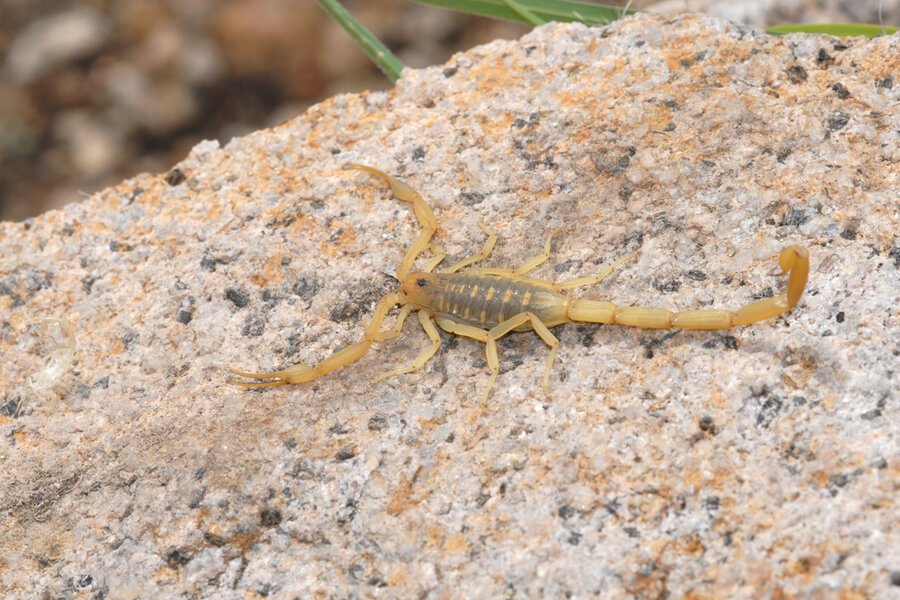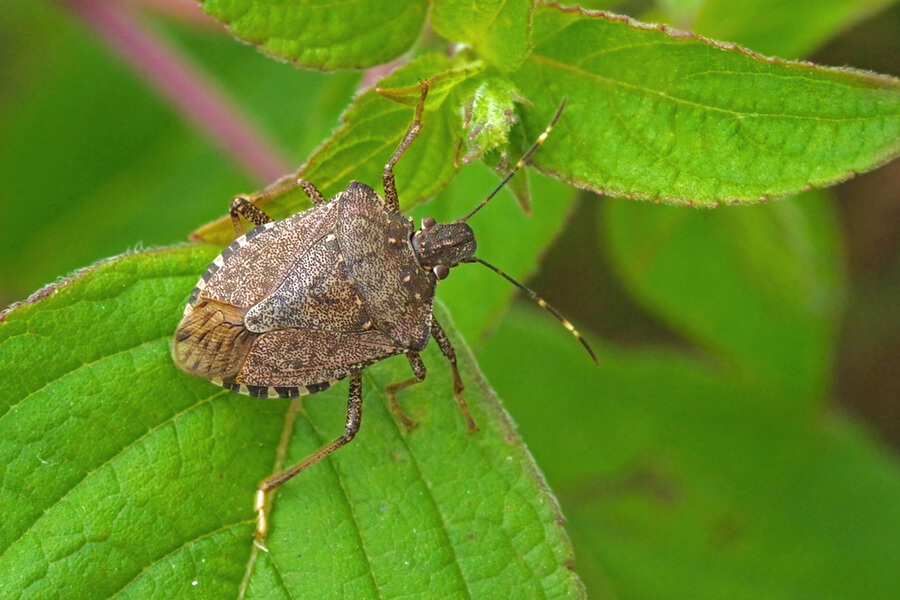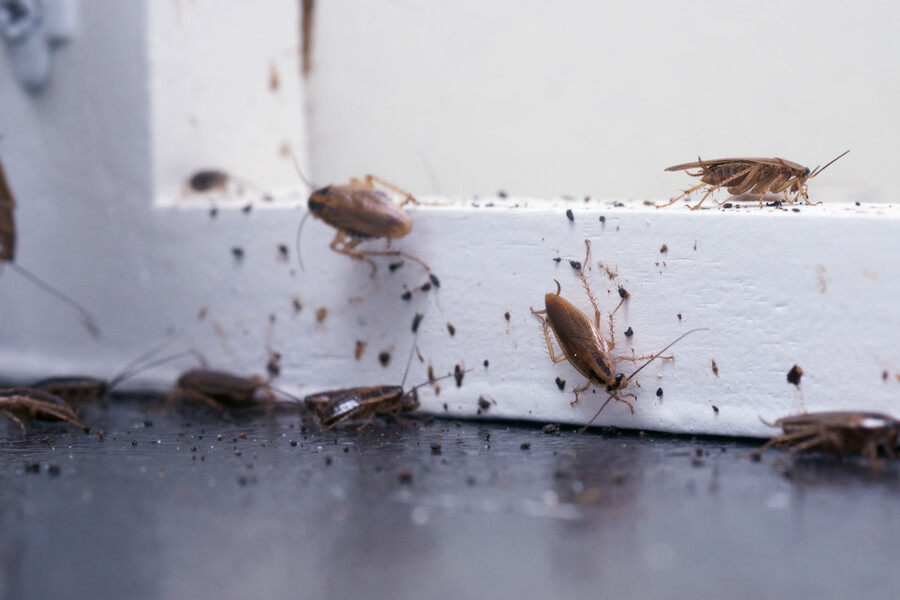Arizona Bark Scorpion
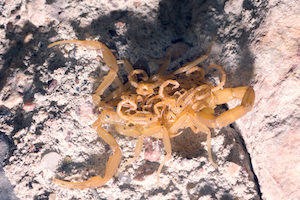 We’ll start with the good news. The Arizona bark scorpion (Centruroides sculpturatus) is the only scorpion that can kill humans in the American southwest. Now the bad news. They’re also one of the most common scorpions in the American southwest. More bad news: Arizona bark scorpions frequently overwinter together in groups of 20 or more. More bad news: They’re one of the only scorpions that’s good at climbing. Yeah, that’s a lot of bad news.
In the US, Arizona bark scorpions live primarily in Arizona (obviously), western New Mexico, Nevada, and southeastern California. They’re apparently quite common in the Grand Canyon. Scorpions sting around 17,000 people in the US every year. The Arizona bark scorpion’s sting causes severe pain, numbness, tingling sensations, and possible muscular dysfunction. Symptoms persist for 24 to 72 hours. Victims stung by Arizona bark scorpions almost never die. Almost never. The sting is considered most dangerous for children, the elderly, and people with hypertension. A little more good news: Bark scorpion antivenom exists and is administered for the sting at some hospitals. Now (you guessed it) more bad news: it’s controversially expensive. So it goes.
We’ll start with the good news. The Arizona bark scorpion (Centruroides sculpturatus) is the only scorpion that can kill humans in the American southwest. Now the bad news. They’re also one of the most common scorpions in the American southwest. More bad news: Arizona bark scorpions frequently overwinter together in groups of 20 or more. More bad news: They’re one of the only scorpions that’s good at climbing. Yeah, that’s a lot of bad news.
In the US, Arizona bark scorpions live primarily in Arizona (obviously), western New Mexico, Nevada, and southeastern California. They’re apparently quite common in the Grand Canyon. Scorpions sting around 17,000 people in the US every year. The Arizona bark scorpion’s sting causes severe pain, numbness, tingling sensations, and possible muscular dysfunction. Symptoms persist for 24 to 72 hours. Victims stung by Arizona bark scorpions almost never die. Almost never. The sting is considered most dangerous for children, the elderly, and people with hypertension. A little more good news: Bark scorpion antivenom exists and is administered for the sting at some hospitals. Now (you guessed it) more bad news: it’s controversially expensive. So it goes.
Africanized Honey Bee
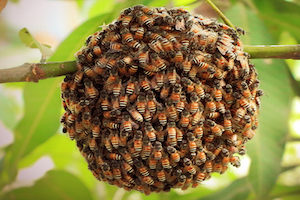 The African honey bee (Apis mellifera scutellata Lepeletier) was (in)famously introduced into South America in 1957. From there, it migrated north to southern Florida and beyond by hybridizing with other bees. “Africanized” honey bees are the result of African honey bees mating with the European honey bees present in the US. They look like the regular honey bees you’re familiar with. Unfortunately, they do not act like regular honey bees.
African honey bees and their progeny defend their nests more aggressively than their European counterparts. Africanized honey bees can respond to perceived threats over 50 feet away from their nests. They’ve even chased these “threats” more than a mile! This hyper-defensive, dangerous behavior has earned the Africanized honey bee the nickname “the killer bee”. According to the University of Illinois, there are around 40 fatal “killer bee” attacks every year. The Africanized honey bee’s sting is not inherently more deadly than a European honey bee’s. Africanized honey bee attacks are dangerous because entire colonies will attack perceived threats at once and sting hundreds of times. Yikes.
The African honey bee (Apis mellifera scutellata Lepeletier) was (in)famously introduced into South America in 1957. From there, it migrated north to southern Florida and beyond by hybridizing with other bees. “Africanized” honey bees are the result of African honey bees mating with the European honey bees present in the US. They look like the regular honey bees you’re familiar with. Unfortunately, they do not act like regular honey bees.
African honey bees and their progeny defend their nests more aggressively than their European counterparts. Africanized honey bees can respond to perceived threats over 50 feet away from their nests. They’ve even chased these “threats” more than a mile! This hyper-defensive, dangerous behavior has earned the Africanized honey bee the nickname “the killer bee”. According to the University of Illinois, there are around 40 fatal “killer bee” attacks every year. The Africanized honey bee’s sting is not inherently more deadly than a European honey bee’s. Africanized honey bee attacks are dangerous because entire colonies will attack perceived threats at once and sting hundreds of times. Yikes.
Cow Killer
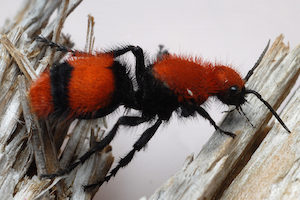 This freaky-looking thing definitely wins in the “most intimidating name” category. Though they look like ants and females are wingless, members of the Mutillidae “velvet ant” family are actually wasps. Like most wasps, they can sting. Oh boy, can they sting. The nickname “cow killer” comes from the reputation of the female velvet ant’s sting. When threatened, wingless female velvet ants are capable of delivering a sting that’s apparently painful enough to kill a cow.
The cow killer’s sting isn’t actually very toxic at all, so it won’t kill a cow any time soon. Even if the name is hyperbole, however, the pain isn’t--as several experts can attest. Entomologist Justin Schmidt won an Ig Nobel Prize for his “Schmidt Pain Index”, which measures the painfulness of various insect stings. Schmidt ranked a cow killer’s sting as a 3 out of 4 and described it as an “intense burning”. Luckily, cow killers aren’t naturally aggressive. They’ll only sting if cornered or threatened. They even have multiple secondary defensive measures, including their bright coloration and a scent-producing gland, to discourage predators.
The freakiest thing about each of these bugs is that they’re not so far from home. Ok, you may not run into a scorpion every day, but African honey bees and cow killers could be right outside your door! Or right behind your back!
...Did we get you? Well, don’t worry: even if the most terrifying of insects darkens your door this season, you have a secret weapon: us. Just give Varment Guard a call and we’ll save the day. Until then, sleep tight, and don’t let the cow killer bite... Happy Halloween!
This freaky-looking thing definitely wins in the “most intimidating name” category. Though they look like ants and females are wingless, members of the Mutillidae “velvet ant” family are actually wasps. Like most wasps, they can sting. Oh boy, can they sting. The nickname “cow killer” comes from the reputation of the female velvet ant’s sting. When threatened, wingless female velvet ants are capable of delivering a sting that’s apparently painful enough to kill a cow.
The cow killer’s sting isn’t actually very toxic at all, so it won’t kill a cow any time soon. Even if the name is hyperbole, however, the pain isn’t--as several experts can attest. Entomologist Justin Schmidt won an Ig Nobel Prize for his “Schmidt Pain Index”, which measures the painfulness of various insect stings. Schmidt ranked a cow killer’s sting as a 3 out of 4 and described it as an “intense burning”. Luckily, cow killers aren’t naturally aggressive. They’ll only sting if cornered or threatened. They even have multiple secondary defensive measures, including their bright coloration and a scent-producing gland, to discourage predators.
The freakiest thing about each of these bugs is that they’re not so far from home. Ok, you may not run into a scorpion every day, but African honey bees and cow killers could be right outside your door! Or right behind your back!
...Did we get you? Well, don’t worry: even if the most terrifying of insects darkens your door this season, you have a secret weapon: us. Just give Varment Guard a call and we’ll save the day. Until then, sleep tight, and don’t let the cow killer bite... Happy Halloween!

